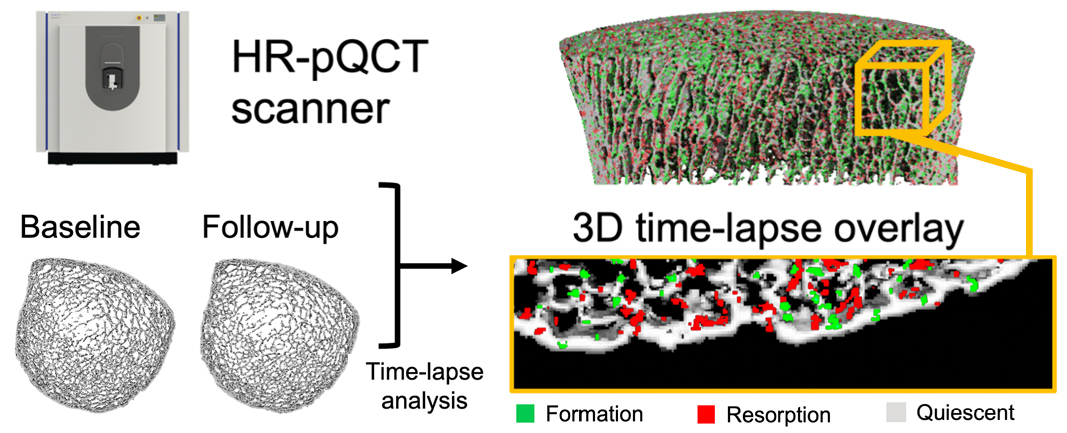Computed Tomography as a “Virtual Bone Biopsy” for Kidney Disease

Chronic kidney disease (CKD) affects just under 10% of the general population and about 40% of the elderly population worldwide. These patients also suffer from significantly elevated fracture risk due to abnormal bone turnover (either very high or very low turnover), and these fractures have serious and sometimes fatal health implications. High bone turnover and low bone turnover present similar fracture risks yet require drastically different treatments. Thus, patient-specific bone turnover assessments are essential for providing safe and effective treatments. However, there is not currently a reliable, accessible, non-invasive bone turnover assessment and monitoring tool in widespread use.
A team of researchers at UCSF led by first author Minhao Zhou, PhD, and senior author Galateia Kazakia, PhD, have published a new paper in the Journal of Bone and Mineral Research that details a technique combining time-lapse analysis with high-resolution peripheral quantitative computed tomography (time-lapse HR-pQCT) scans obtained over time to assess bone turnover and thus inform treatment.
HR-pQCT is a non-invasive and low radiation dose imaging modality that acquires very high-resolution images of bone morphologic features. By comparing two time-lapse images produced by the newest generation of HR-pQCT scanners, the time-lapse analysis can evaluate temporospatial bone gain and loss, producing a ‘virtual bone biopsy.’ This study evaluated the application of this time-lapse HR-pQCT technique to assess and monitor local bone formation and resorption in patients with CKD.
Kazakia, Zhou, and their colleagues found that with just two months between HR-pQCT scans, the time-lapse HR-pQCT pipeline was able to reliably assess local bone turnover in a cohort of patients with end-stage kidney disease. Their findings show that time-lapse HR-pQCT holds promise as an effective and painless ‘virtual bone biopsy’ that reliably assesses and monitors local bone turnover for CKD bone care.
To learn more about this and other imaging research that addresses bone health and pathology, visit Dr. Kazakia’s Bone Quality Research Lab and the interdisciplinary Musculoskeletal Quantitative Imaging Research (MQIR) group.
